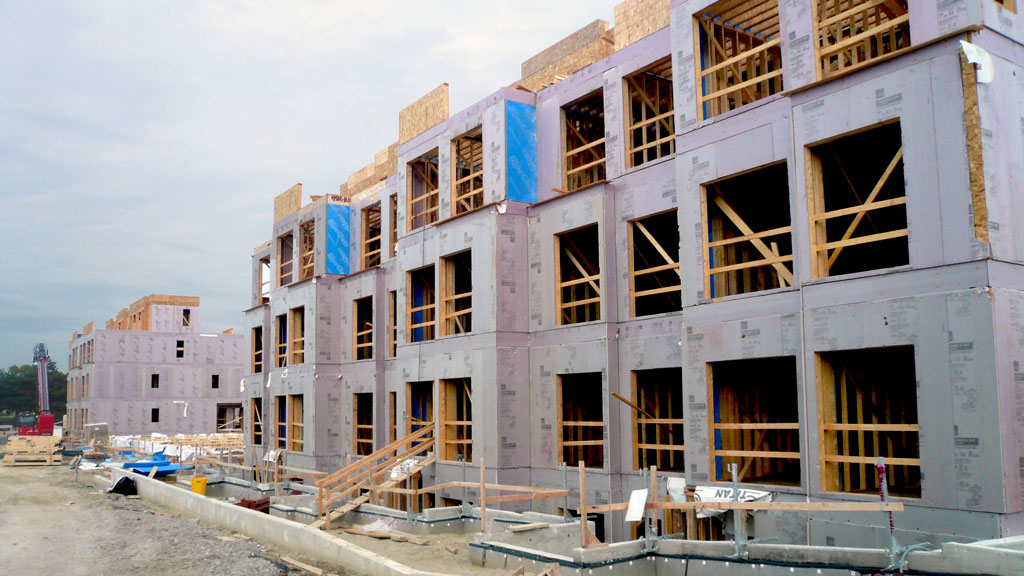Ontario’s co-op housing sector is clearly on the upswing with significant policy support and funding from both the federal and provincial governments amid realization the model fits well into Canada’s strategy to ensure affordability is part of its solution to the housing crisis.
Co-op housing advocates have been working closely with the federal government since it announced its new Co-operative Housing Development Program in Budget 2022 and there is now $1.8 billion allotted to the program, which may launch this year.
At the same time frame, the Ontario government has introduced a new Community Housing Renewal Strategy with funding announced last month that, advocates say, will help co-ops become more entrepreneurial and enter a new phase of development.
Amina Dibe, Ontario-based senior manager of government relations for the Co-operative Housing Federation of Canada (CHFC), said the sector is demonstrating innovation across Canada, and that it’s proven to be one of the most stable and resilient forms of affordable housing available.
‘We’re poised for growth’
Analysis has shown co-op housing charges for one- and two-bedroom apartments are approximately 33 per cent less than comparable market rents across Canada.
“We’re poised for growth,” said Dibe. “We’re really working with governments and developers and our members because everything we do is member-led to make sure that this growth happens.
“I don’t think there’s one silver bullet or one specific housing model that is going to solve the housing affordability and supply crisis, but that’s where we’re coming at, we want to be considered as a partner to achieve collective housing targets.”
The Canada Mortgage and Housing Corporation at one point said the Co-operative Housing Development Program was due for release early in 2024 but Dibe would only say it’s hoping for a 2024 release date.
“We’re very excited about the launch of the program,” she said. “This is one of the biggest investments in co-op housing ever, and it was a huge undertaking to work with the government.”
The January funding announcement of $647,000 over three years by the Ontario Ministry of Municipal Affairs and Housing also came following consultation with providers. Dibe said the 2022 legislative reforms in Ontario were done to stabilize and grow the sector. It ensures capital reserves are allowed and that co-ops in Ontario will continue to have access to funding for rental assistance for low-income households once a mortgage period ends.
The asset management plans help co-ops stabilize their financial status “before they’re able to start thinking about building new stock,” Dibe said.
“We are eager for the province to address the gap in non-market stock and guarantee that a fair share of non-market, specifically co-operative housing, for low and moderate-income families is included in the goal of developing 1.5 million new homes, with the co-op sector as a partner.”
Currently 550 co-ops with about 125,000 residents in Ontario
The co-ops in Ontario represented by the CHFC do not require down payments and the members do not have personal equity. There is common ownership by members with members contributing to the sustainability and the upkeep of the co-op, Dibe explained.
New units are being developed across the country through such new models as land co-operatives, popular in Nova Scotia and in B.C.; the conversion of purpose-built rentals with the help of municipal governments, as in Hamilton; various entities pooling resources to leverage the combined value of their assets, as in Sault Ste. Marie, Ont.; and working with multiple partners to expand existing projects onto adjacent available land, as in Kingston, Ont.
There are currently 550 co-ops with about 125,000 residents in Ontario.
“More groups are on board with trying to understand the model and trying to grow it as well,” said Dibe.
The CHFC commissioned a study from Deloitte demonstrating that to increase the share of community housing units from its current level to the OECD average of seven per cent by 2030 will require adding 371,600 units. Through the new government supports and the sector’s own new-found ambition and innovation, advocates believe they are in a good position to greatly expand their reach, said Dibe.
And the market is ready for it.
“The analysis is there and the justification certainly is there. The waitlist some of our members are experiencing for people who are interested in living in a co-op is astronomical,” said Dibe.
Follow the author on Twitter @DonWall_DCN.










Recent Comments